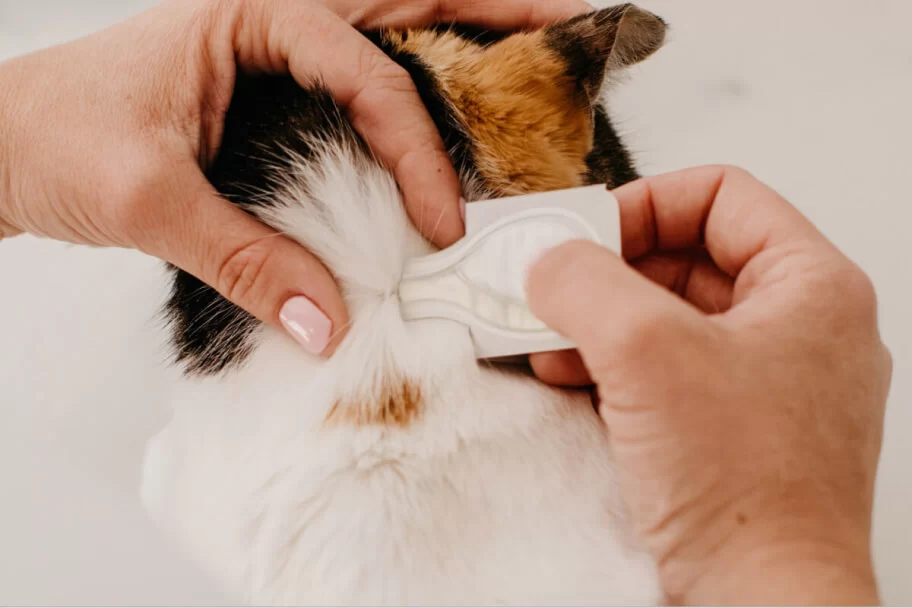Top Flea and Tick Treatments for Cats: Effective Solutions for Your Feline Friend
- Understanding Fleas and Ticks in Cats
- The Importance of Flea and Tick Treatment for Cats
- Types of Flea and Tick Treatments for Cats
- How to Choose the Right Flea and Tick Treatment
- Natural vs. Chemical Flea and Tick Treatments
- When to Seek Veterinary Advice for Flea and Tick Problems
1. Understanding Fleas and Ticks in Cats
Fleas and ticks are common pests that can affect cats, leading to discomfort, skin irritation, and potential health issues. Fleas are small, wingless insects that feed on your cat’s blood and can cause itching, hair loss, and even anemia if left untreated. Ticks are arachnids that attach to your cat’s skin to feed, and they can transmit diseases such as Lyme disease and Rocky Mountain spotted fever.
Both fleas and ticks can infest your home, leading to a cycle of reinfection. Therefore, addressing these issues quickly is essential to protect both your cat’s health and your household’s well-being.
2. The Importance of Flea and Tick Treatment for Cats
Regular flea and tick treatments are crucial for preventing infestations, which can lead to a range of health problems for your cat. Fleas can cause severe itching, resulting in scratches, hair loss, and potential skin infections. If left untreated, fleas can also lead to flea allergy dermatitis (FAD), a condition that can make your cat's skin hypersensitive.
Ticks, on the other hand, are known to transmit diseases, some of which can be life-threatening. Early treatment helps prevent serious complications, ensuring that your cat remains healthy and comfortable.
By choosing the right flea and tick prevention, you can avoid these issues, keeping your cat safe from harm. The best prevention options also help eliminate any existing infestations, providing fast relief to your feline friend.
3. Types of Flea and Tick Treatments for Cats
There are several types of flea and tick treatments available for cats, each offering different benefits depending on your pet’s needs. Here are some of the most popular options:
3.1. Topical Treatments
Topical treatments are applied directly to your cat’s skin, usually at the back of the neck, where they can’t lick the product off. These treatments are absorbed into your cat’s bloodstream, providing long-lasting protection against fleas and ticks. Popular options include Frontline Plus, Advantage II, and Revolution. These treatments typically last for a month and are known for their effectiveness in both killing fleas and preventing infestations.
3.2. Oral Medications
Oral flea and tick medications come in the form of chewable tablets or pills. These treatments work by entering your cat's bloodstream and killing fleas and ticks when they bite. Some well-known oral treatments include Comfortis and NexGard. These medications provide protection for up to a month and can be a good option if your cat resists topical treatments.
3.3. Flea Collars
Flea collars are an easy-to-use option that provides continuous protection against fleas and ticks. These collars release active ingredients that repel pests, providing protection for several months. The Seresto collar is one of the most popular and effective flea collars on the market, offering up to 8 months of protection.
3.4. Flea Shampoos
Flea shampoos are effective for cleaning your cat’s fur and killing fleas on contact. While they can be a quick solution for existing flea problems, they usually don’t provide long-lasting protection. It's often best to use flea shampoos in conjunction with another treatment option for more effective control.
4. How to Choose the Right Flea and Tick Treatment
Choosing the best flea and tick treatment for your cat depends on several factors, including your cat’s age, health, and any preferences they have regarding treatments. Here are some considerations to help guide your decision:
4.1. Age and Weight of Your Cat
Different flea treatments are formulated for cats of various ages and sizes. Make sure to select a product specifically designed for your cat's weight and age to ensure its safety and effectiveness. Always read the label for appropriate dosage and instructions.
4.2. Lifestyle and Activity Level
If your cat spends a lot of time outdoors, they may be more likely to encounter fleas and ticks. In this case, long-lasting treatments like topical treatments or flea collars can offer continuous protection. Indoor cats may benefit from a simpler, less frequent treatment regimen.
4.3. Sensitivities or Allergies
Some cats have sensitive skin or may be allergic to certain chemicals. If your cat has had previous reactions to flea treatments, you may want to consult with your vet to find a hypoallergenic or natural alternative.
5. Natural vs. Chemical Flea and Tick Treatments
There are both natural and chemical flea and tick treatments available, each with its own set of pros and cons. Natural treatments often rely on essential oils or herbs like neem or lavender to repel fleas and ticks. While these can be effective for some cats, they may not offer the same level of protection as chemical treatments.
Chemical treatments, while sometimes more effective, can come with potential side effects. Always consult your veterinarian to determine the best approach based on your cat's specific health needs.
6. When to Seek Veterinary Advice for Flea and Tick Problems
If you're unsure which flea and tick treatment is best for your cat, or if you notice persistent symptoms of flea or tick infestations, it’s important to consult a veterinarian. A vet can recommend the most appropriate treatment based on your cat's health history, environment, and the severity of the problem.
6.1. Signs of Flea or Tick Problems
Common signs of flea infestations include excessive scratching, hair loss, and visible fleas or flea dirt (small black specks). Ticks can often be seen attached to your cat’s skin, particularly around the ears or neck area. If you notice any of these symptoms, it’s essential to start treatment right away to prevent further complications.
6.2. Professional Guidance
A veterinarian can guide you in selecting the best treatment, whether it be topical, oral, or a more natural alternative. They can also check for any underlying health conditions that could be exacerbating your cat’s susceptibility to pests.
Conclusion
Fleas and ticks are not just an inconvenience for cats—they can lead to serious health issues if left untreated. By choosing the right flea and tick treatment for your cat, you can ensure they remain comfortable and protected. Whether you opt for topical treatments, oral medications, or flea collars, it’s important to stay proactive in your cat’s pest control routine.
For more personalized recommendations on the best flea and tick treatments for your cat, visit Hidden Brook Veterinary and schedule a consultation.












